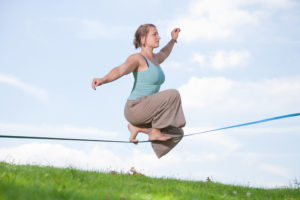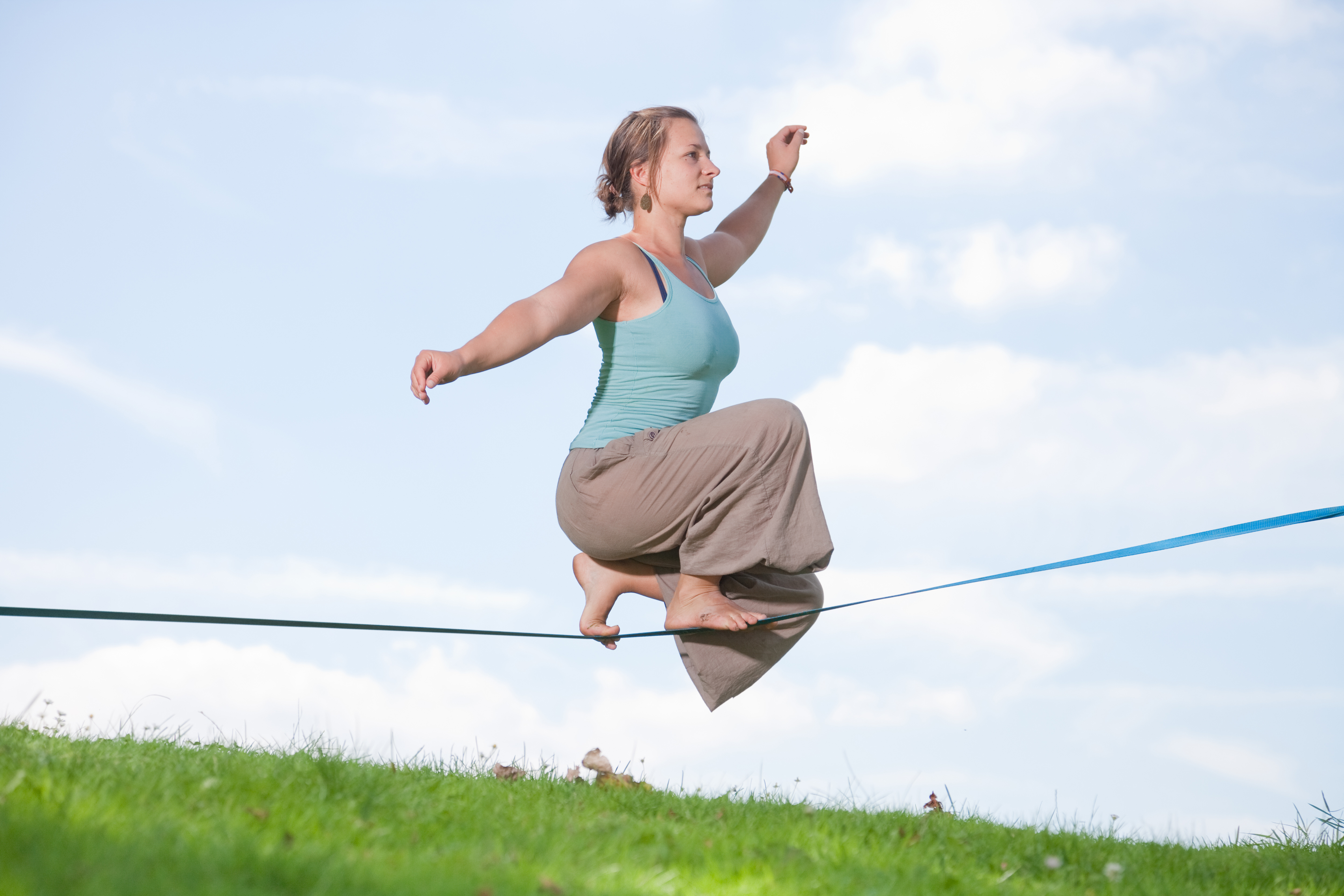 Exercise places a significant amount of stress on your body. It’s a good kind of stress, but if you’re not properly trained and haven’t developed a certain level of fitness, your risk of injury goes up. Using good form during resistance training and doing a balanced workout that targets all the major muscle groups helps lower your risk for injury. It also improves muscle strength in a balanced manner. But there’s another aspect of training you may not be as familiar with. It’s proprioceptive skills. You need effective proprioceptive skills if you play sports, especially sports that require quick movements and rapid changes in position. It can even help your performance when you strength train.
Exercise places a significant amount of stress on your body. It’s a good kind of stress, but if you’re not properly trained and haven’t developed a certain level of fitness, your risk of injury goes up. Using good form during resistance training and doing a balanced workout that targets all the major muscle groups helps lower your risk for injury. It also improves muscle strength in a balanced manner. But there’s another aspect of training you may not be as familiar with. It’s proprioceptive skills. You need effective proprioceptive skills if you play sports, especially sports that require quick movements and rapid changes in position. It can even help your performance when you strength train.
What is Proprioception?
What is proprioception? It’s the ability to tell how your body and limbs are oriented in space without looking at them. Having the ability to do this allows your body to make the necessary adjustments needed for you to stay stable when you move around. You make these adjustments constantly throughout the day without conscious awareness. For example, you walk down the street and encounter an object in your path that threatens to send you tumbling on to the sidewalk. Hopefully, the pathways involved in proprioception will react quickly enough to keep you from taking a nasty fall!
Another time strong proprioception works in your favor is when you try to find your way in the dark when you don’t have visual input. Normally, you depend on visual markers to help you navigate through a dark room. If you don’t have visual cues because the lights are out, you need proprioception to help you reach your destination safely. The systems that help you successfully get around safely are threefold–proprioception, visual, and vestibular. They all work together, but proprioception and your vestibular system have to work overtime when you’re operating in the dark or with your eyes closed.
You might wonder how proprioception works. Your muscles, tendons, and joints have receptors called mechanoreceptors that are highly sensitive to position changes and changes in tension. If these receptors detect even a small change, they send a signal to your brain and your brain makes the appropriate compensation to keep you stable and upright. This goes on “behind the scenes” without you having to think about it.
You Need Good Proprioception
Having strong proprioception is obviously important if you play sports. Knowing where your body and limbs are positioned in space helps you move more efficiently and accurately. It also lowers your risk of a potentially catastrophic injury. When you play sports, your environment is constantly changing and the quicker you can react the better your performance will be in your chosen sport and the lower your risk of injury will be.
As you can see, proprioceptive skills are vital for success in sports, but you also need them to safely carry out the activities you do daily. You use proprioception every time you change positions, rise out of a chair, or move across a room. Unfortunately, proprioceptive abilities decline with age. That’s one reason the risk of falls goes up with age, especially when you combine poor proprioception with declining vision and loss of muscle strength and power. It’s a bad combination! Changes in proprioception with aging also contribute to joint degeneration and arthritis.
Fortunately, you can improve your proprioceptive skills with consistent training. Doing so will positively impact your performance when you train and your functionality in daily life. How do you know if your proprioceptive skills are weak? Here’s a simple test:
- From a standing position, place one foot in front of the other so that the heel of one foot touches the toes of the other and your feet form a straight line.
- Raise your arms straight out to your sides at shoulder height as you hold this position.
- Hold this stance as long as you can while someone times you.
If you can’t hold this position for at least 30 seconds, your proprioceptive skills could use some work.
How to Improve Your Proprioceptive Skills
Plyometric drills are helpful for improving proprioception. One that’s particularly beneficial is lateral jumps where you jump back and forth across an invisible line. Here’s how to do them:
- Stand on one side of an imaginary line or a line you created with tape.
- Lower your body into a quarter squat and jump across the line to the other side. Land in a squat position.
- Continue jumping back and forth across the line.
Another way to improve proprioception is to remove visual input from the exercises you do. In other words, close your eyes when you do exercises like squats and lunges. When you do this, you force your proprioceptive pathways to work harder since there’s no visual input. Try doing on the final set of an exercise. It may be difficult at first, especially lunges, but as it becomes easier, you’ll know your proprioception is improving.
You can even work on proprioception when you’re standing at the sink brushing your teeth or washing dishes. Raise one leg off the ground and hold it as long as you can. Then, try it with your eyes closed. Much harder, right?
Another way to enhance proprioception is to do some exercises on an unstable surface, like a BOSU ball. When you perform your last set of squats or curls, do the exercises while standing on a BOSU ball. Working on an unstable surface, like a BOSU ball, has other benefits as well. It forces your core and stabilizing muscles to work harder. Some people even invest in a wobble board to work on proprioception, but you don’t need to do that. If you use the techniques above, your proprioception should improve over time.
Conclusion
Getting strong, powerful, and building muscle endurance and cardiovascular fitness are important, but so is strong proprioception. Improving this skill will help you in every aspect of your training and your daily life. You’ll also have a leg up on the aging process, as the loss of these skills is a common cause of disability in older people. Now, you have a better idea of how to improve proprioception when you train.
References:
Stack.com. “Why Athletes Need Balance and Proprioception Training”
Front Hum Neurosci. 2014; 8: 1075.
